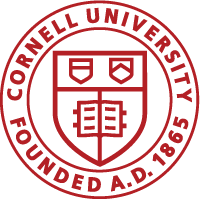Postparturient Dyscalcemia: Does Liver Functionality Contribute to Calcium Dysregulation in Dairy Cows?
Principal Investigator: Jessica McArt
Co-PI: Kathryn Bach
DESCRIPTION (provided by applicant):
Dairy cows commonly experience dyscalcemia in the early postpartum. Dyscalcemia, defined as a low serum calcium concentration at 4 d postpartum, is an indicator that cows are likely to suffer adverse health outcomes, produce less milk, and have decreased reproductive success when compared to their eucalcemic counterparts. The causes of dyscalcemia are largely unknown, although there is evidence that inflammatory activation is involved. Vitamin D is a potent regulator of calcium homeostasis and inducer of anti-inflammatory immune responses, and as the liver plays a key role in activating vitamin D, it is likely that under conditions of hepatic dysfunctionality, vitamin D metabolism is impaired. To date, linkages between liver functionality, vitamin D, and calcium dysregulation have been overlooked. Our objective is to determine how liver function and vitamin D are associated with dyscalcemia in early postpartum cows. We hypothesize that dyscalcemic cows experience hepatic dysfunctionality both preceding and following parturition as well as depressed vitamin D concentrations in the early postpartum period. We will test these hypotheses using two aims:
1) Establish temporal patterns of liver functionality, pre- and postpartum, in cows with and without dyscalcemia.
2) Quantify differences in postpartum concentrations of vitamin D over time between dyscalcemic and eucalcemic cows.
We will accomplish these aims through a prospective cohort study design in 45 multiparous Holstein cows. To assess Aim 1, we will evaluate liver functionality prepartum by analyzing a robust set of liver health and functionality metrics, including enzymes, energy related metabolites, albumin, bilirubin, and cholesterol at 1 prepartum timepoint and 8 postpartum timepoints to track changes in liver health and function before and after calving. We will compare the patterns of liver health metrics between cows with and without dyscalcemia using linear mixed effects models. To assess Aim 2, we will measure serum vitamin D concentrations every 8 h after parturition until 48 h postpartum, at 72 h, and again at 96 h postpartum, and we will compare dyscalcemic and eucalcemic groups using linear mixed effects models. Through these aims, we will understand the role hepatic dysfunction plays in calcium dysregulation and the specific involvement of vitamin D as a regulator of calcium homeostasis. This knowledge is vital for understanding physiological dysregulation in the postpartum period and for the development of clinical intervention strategies to alleviate negative outcomes for dyscalcemic cows.


